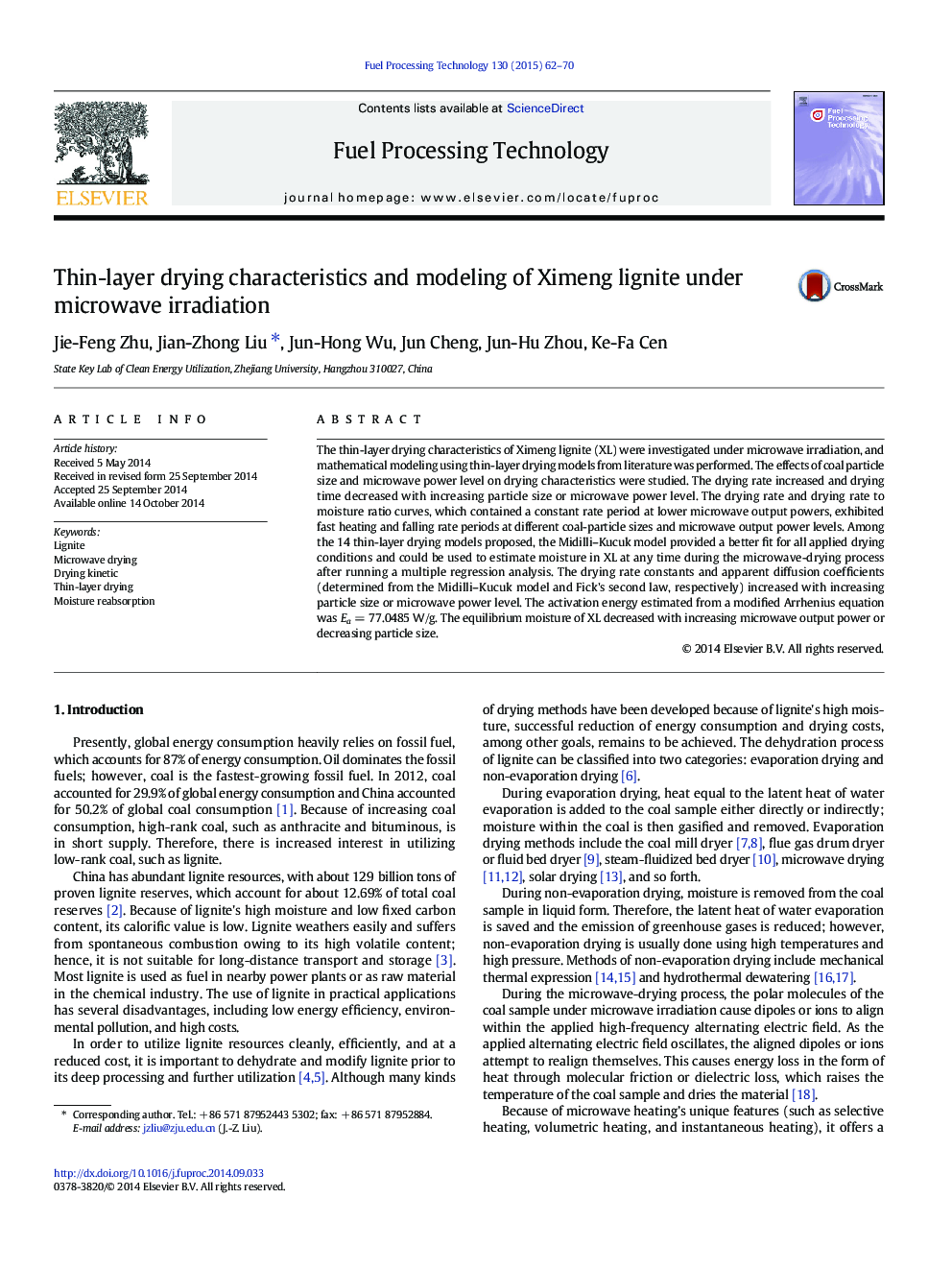| Article ID | Journal | Published Year | Pages | File Type |
|---|---|---|---|---|
| 209538 | Fuel Processing Technology | 2015 | 9 Pages |
•Only the drying curves at lower power level exhibited a constant rate period.•The Midilli–Kucuk model better fits all the applied drying conditions.•Apparent diffusion coefficients and activation energy were estimated.
The thin-layer drying characteristics of Ximeng lignite (XL) were investigated under microwave irradiation, and mathematical modeling using thin-layer drying models from literature was performed. The effects of coal particle size and microwave power level on drying characteristics were studied. The drying rate increased and drying time decreased with increasing particle size or microwave power level. The drying rate and drying rate to moisture ratio curves, which contained a constant rate period at lower microwave output powers, exhibited fast heating and falling rate periods at different coal-particle sizes and microwave output power levels. Among the 14 thin-layer drying models proposed, the Midilli–Kucuk model provided a better fit for all applied drying conditions and could be used to estimate moisture in XL at any time during the microwave-drying process after running a multiple regression analysis. The drying rate constants and apparent diffusion coefficients (determined from the Midilli–Kucuk model and Fick's second law, respectively) increased with increasing particle size or microwave power level. The activation energy estimated from a modified Arrhenius equation was Ea = 77.0485 W/g. The equilibrium moisture of XL decreased with increasing microwave output power or decreasing particle size.
